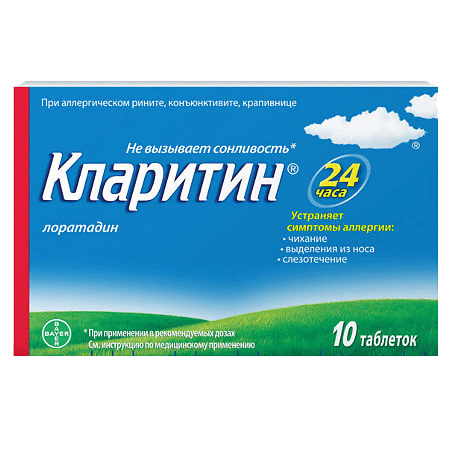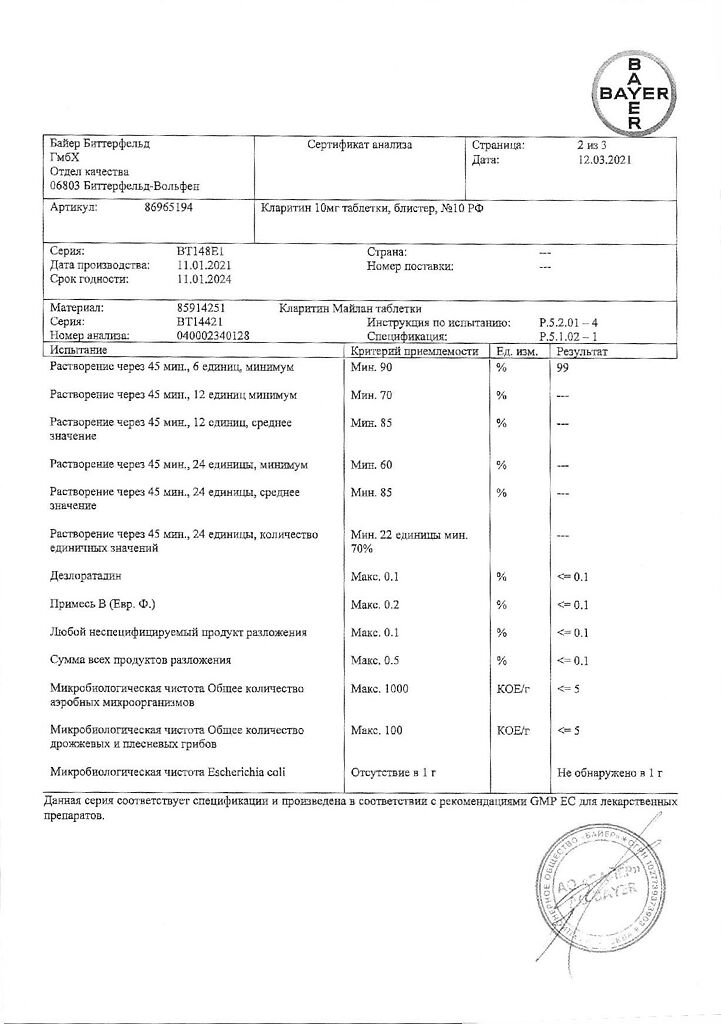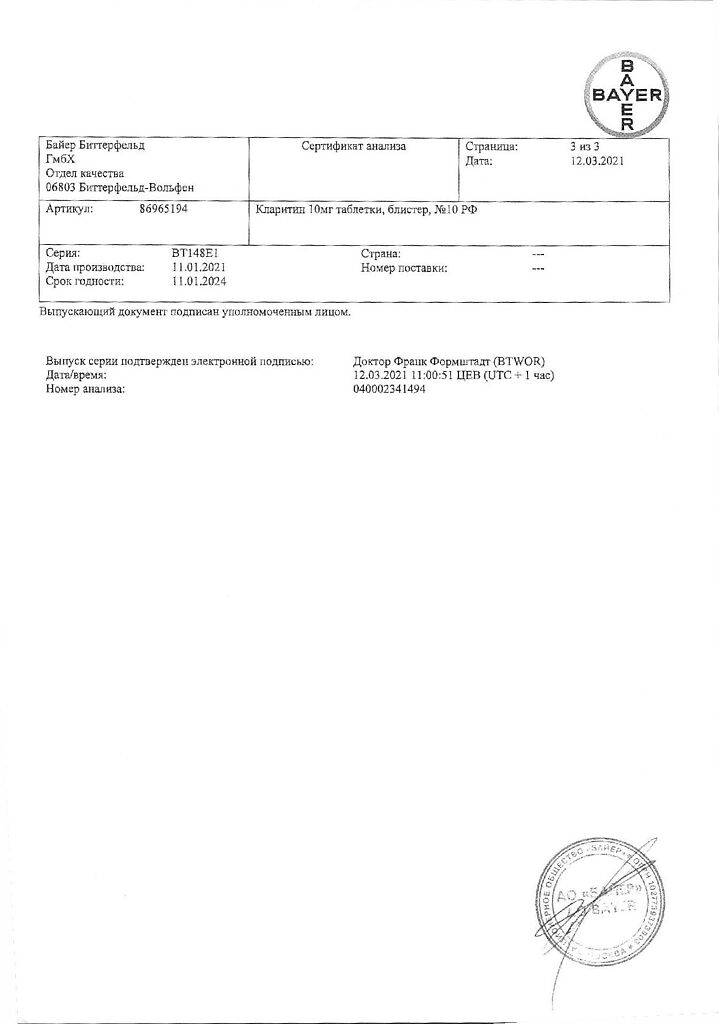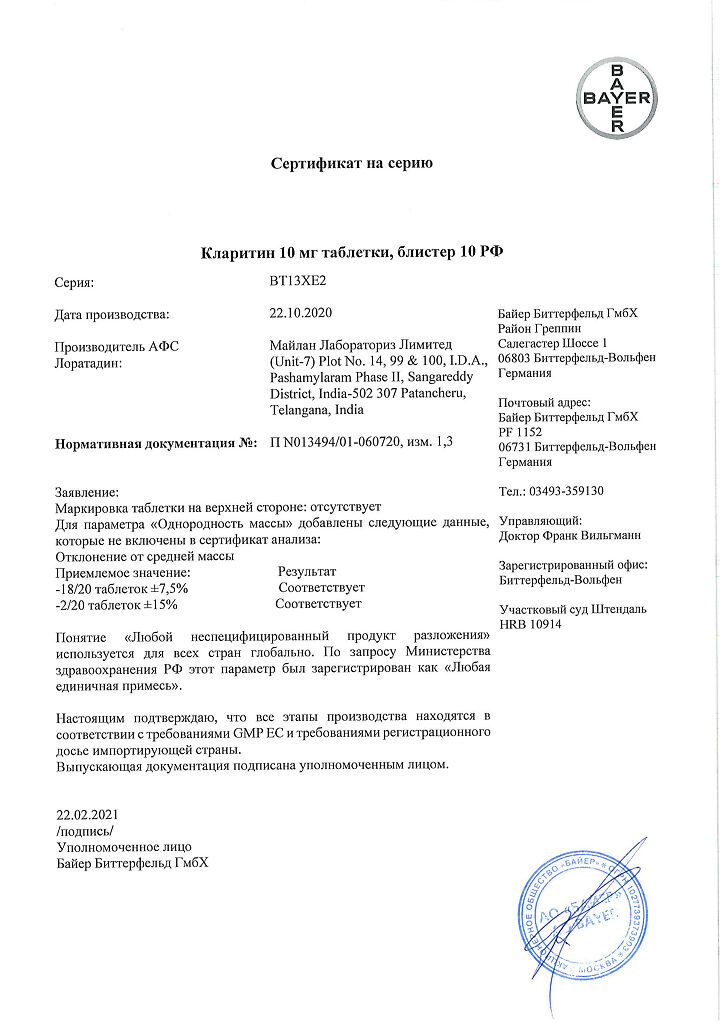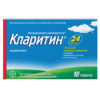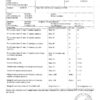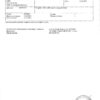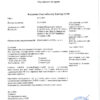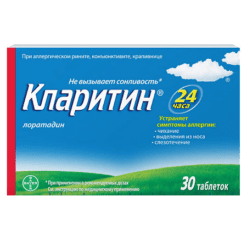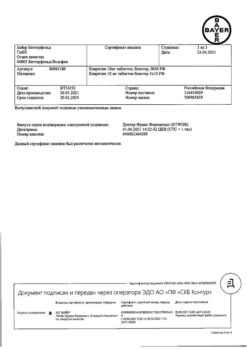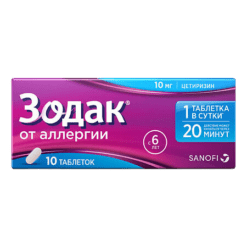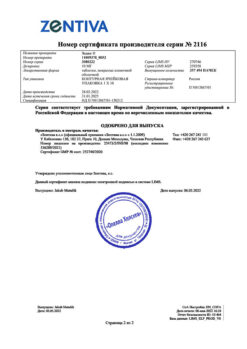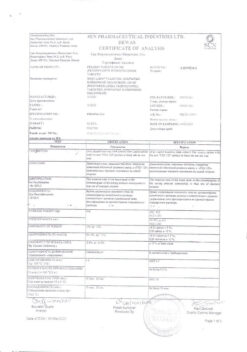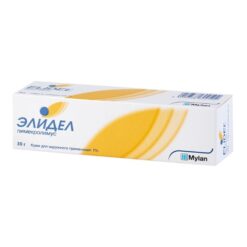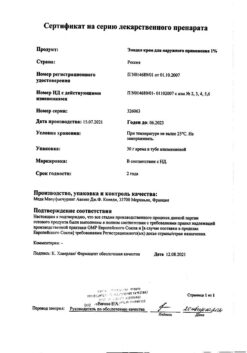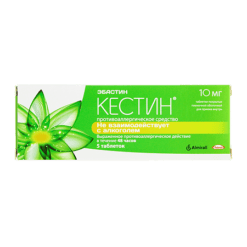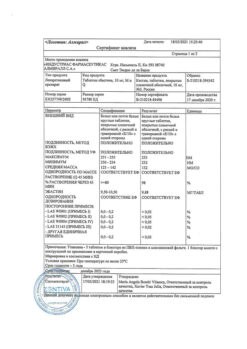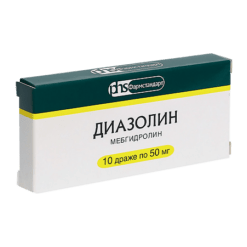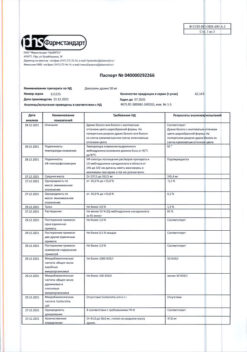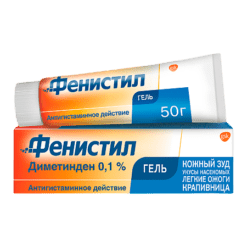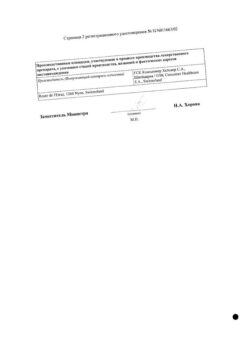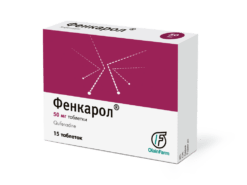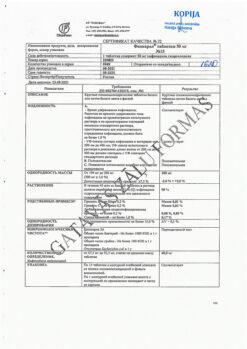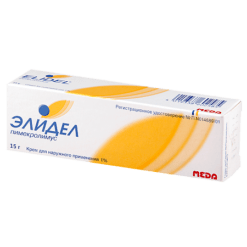No products in the cart.
Description
Antiallergic agent – H1-histamine receptor blocker.
Pharmacodynamics
Loratadine – the active ingredient of Claritin®, is a tricyclic compound with pronounced antihistamine action and is a selective blocker of peripheral H1-histamine receptors. It has a fast and prolonged antiallergic effect. Onset of action is within 30 minutes after oral administration of Claritin®. Antihistamine effect reaches its maximum after 8-12 hours from the beginning of action and lasts for more than 24 hours.
Loratadine does not penetrate through the blood-brain barrier and has no effect on the central nervous system. It has no clinically significant anticholinergic or sedative effect, i.e. it does not cause drowsiness and does not affect the speed of psychomotor reactions when used in the recommended doses. Administration of Claritin® drug does not lead to prolongation of QT interval on ECG.
With long-term treatment there were no clinically significant changes in vital signs, physical examination data, laboratory results or electrocardiography. Loratadine has no significant selectivity for H2-histamine receptors. It does not inhibit norepinephrine reuptake and has practically no effect on the cardiovascular system or rhythm driver function.
Pharmacokinetics
Loratadine is rapidly and well absorbed in the gastrointestinal tract. Time to reach maximum concentration (Tmax) of loratadine in blood plasma is 1-1.5 hours, and its active metabolite desloratadine – 1.5-3.7 hours. Food intake increases the time to reach the maximum concentration (Tmax) of loratadine and desloratadine by about 1 hour, but has no effect on the effectiveness of the drug. Maximum concentration (Cmax) of loratadine and desloratadine is independent of food intake. In patients with chronic renal disease the maximum concentration (Cmax) and area under the curve “concentration-time” (AUC) of loratadine and its active metabolite are increased compared to patients with normal renal function.
The elimination half-lives of loratadine and its active metabolite do not differ from those of healthy patients. In patients with alcoholic liver damage Cmax and AUC of loratadine increased twice as much as these indexes in patients with normal liver function, while pharmacokinetics of its active metabolite did not change significantly. Loratadine has a high degree (97-99%) and its active metabolite has a moderate degree (73-76%) of binding to plasma proteins.
Loratadine is metabolized to desloratadine via the cytochrome P450 3A4 system and, to a lesser extent, the cytochrome P450 2D6 system. It is excreted through the kidneys (about 40% of the oral dose taken) and the intestines (about 42% of the oral dose) for more than 10 days, mainly as conjugated metabolites. Approximately 27% of the ingested dose is excreted through the kidneys within 24 hours after drug administration. Less than 1% of active substance is excreted unchanged through the kidneys within 24 hours after drug intake.
The bioavailability of loratadine and its active metabolite is dose-dependent.
The pharmacokinetic profiles of loratadine and its active metabolite in adult and elderly healthy volunteers were comparable.
The elimination half-life of loratadine ranged from 3 to 20 hours (mean 8.4 hours) and that of desloratadine from 8.8 to 92 hours (mean 28 hours); in older patients, from 6.7 to 37 hours (mean 18.2 hours) and 11 to 39 hours (mean 17.5 hours), respectively. The half-life increases with alcoholic liver damage (depending on the severity of the disease) and does not change in the presence of chronic renal
insufficiency.
Hemodialysis in patients with chronic renal failure has no effect on the pharmacokinetics of loratadine and its active metabolite.
Indications
Indications
Seasonal (hay fever) and year-round allergic rhinitis and allergic conjunctivitis – elimination of symptoms associated with these diseases – sneezing, itching
nasal mucosa, rhinorrhea, burning and itching sensation in the eyes, lacrimation.
Chronic idiopathic urticaria.
Pharmacological effect
Pharmacological effect
Antiallergic agent – H1-histamine receptor blocker.
Pharmacodynamics
Loratadine, the active substance of the drug Claritin®, is a tricyclic compound with a pronounced antihistamine effect and is a selective blocker of peripheral H1-histamine receptors. Has a quick and long-lasting antiallergic effect. The onset of action is within 30 minutes after taking the drug Claritin® orally. The antihistamine effect reaches its maximum after 8-12 hours from the onset of action and lasts more than 24 hours.
Loratadine does not penetrate the blood-brain barrier and has no effect on the central nervous system. Does not have a clinically significant anticholinergic or sedative effect, i.e. does not cause drowsiness and does not affect the speed of psychomotor reactions when used in recommended doses. Taking the drug Claritin® does not lead to prolongation of the QT interval on the ECG.
With long-term treatment, no clinically significant changes in vital signs, physical examination data, or laboratory results were observed
studies or electrocardiography. Loratadine does not have significant selectivity for histamine H2 receptors. Does not inhibit norepinephrine reuptake and has virtually no effect on the cardiovascular system or pacemaker function.
Pharmacokinetics
Loratadine is quickly and well absorbed from the gastrointestinal tract. The time to reach the maximum concentration (Tmax) of loratadine in the blood plasma is 1-1.5 hours, and its active metabolite desloratadine is 1.5-3.7 hours. Eating food increases the time to reach maximum concentration (Tmax) of loratadine and desloratadine by approximately 1 hour, but does not affect the effectiveness of the drug. The maximum concentration (Cmax) of loratadine and desloratadine is independent of food intake. In patients with chronic kidney disease, the maximum concentration (Cmax) and area under the concentration-time curve (AUC) of loratadine and its active metabolite are increased compared to patients with normal renal function.
The half-lives of loratadine and its active metabolite do not differ from those in healthy patients. In patients with alcoholic liver damage, the Cmax and AUC of loratadine are doubled compared to these values in patients with normal liver function, while the pharmacokinetics of its active metabolite does not change significantly. Loratadine has a high degree (97-99%), and its active metabolite has a moderate degree (73-76%) of binding to plasma proteins.
Loratadine is metabolized to desloratadine via the cytochrome P450 3A4 system and, to a lesser extent, the cytochrome P450 2D6 system. Excreted through the kidneys (approximately 40% of the oral dose) and intestines (approximately 42% of the oral dose) for more than 10 days, mainly in the form of conjugated metabolites. Approximately 27% of an oral dose is excreted through the kidneys within 24 hours of taking the drug. Less than 1% of the active substance is excreted unchanged through the kidneys within 24 hours after taking the drug.
The bioavailability of loratadine and its active metabolite is dose-dependent.
The pharmacokinetic profiles of loratadine and its active metabolite were comparable in adults and elderly healthy volunteers.
The half-life of loratadine ranges from 3 to 20 hours (average 8.4 hours), and that of desloratadine ranges from 8.8 to 92 hours (average 28 hours); in elderly patients, respectively, from 6.7 to 37 hours (average 18.2 hours) and from 11 to 39 hours (average 17.5 hours). The half-life increases with alcoholic liver damage (depending on the severity of the disease) and does not change in the presence of chronic renal disease
insufficiency.
Hemodialysis in patients with chronic renal failure does not affect the pharmacokinetics of loratadine and its active metabolite.
Special instructions
Special instructions
Do not use after the expiration date indicated on the package.
Active ingredient
Active ingredient
Loratadine
Composition
Composition
1 tablet contains:
active ingredient: loratadine 10 mg;
excipients: lactose monohydrate 71.3 mg, corn starch 18 mg, magnesium stearate 0.7 mg.
Pregnancy
Pregnancy
The use of Claritin during pregnancy is possible only if the expected benefit to the mother outweighs the potential risk to the fetus.
Since the active components of the drug are excreted in breast milk, therefore, when prescribing the drug during lactation, the issue of stopping breastfeeding should be decided.
Contraindications
Contraindications
Hypersensitivity to the components of the drug, age up to 2 years (for syrup), up to 3 years or body weight less than 30 kg (for tablets); breastfeeding period; rare hereditary diseases (galactose intolerance disorders, lactase deficiency) for tablets; glucose-galactose malabsorption; sucrase/isomaltase deficiency, fructose intolerance for syrup.
With caution: severe liver dysfunction.
Side Effects
Side Effects
From the digestive system: in adults – nausea, gastritis; rarely – liver dysfunction.
From the side of the central nervous system: in adults, headache, fatigue, dry mouth, and drowsiness were noted. Rarely observed in children: headache, nervousness, sedation. As in adults, the incidence of these events in children was at the same level as with placebo.
Allergic reactions: in adults – skin rash; rarely – anaphylaxis. From the cardiovascular system: in adults rarely – palpitations, tachycardia. Other: in adults, rarely – alopecia.
Interaction
Interaction
When taking Claritin together with ketoconazole, erythromycin or cimetidine, an increase in the concentration of loratadine and its metabolite in plasma was observed, but this increase did not manifest itself clinically, incl. according to ECG data.
Claritin does not enhance the effect of ethanol (alcohol) on the central nervous system.
Overdose
Overdose
Data not described.
Storage conditions
Storage conditions
Store out of the reach of children at a temperature of 2° to 30°C.
Shelf life
Shelf life
4 years.
Manufacturer
Manufacturer
Bayer Bitterfeld GmbH, Germany
Additional information
| Shelf life | 4 years. |
|---|---|
| Conditions of storage | Keep out of reach of children at 2° to 30°C. |
| Manufacturer | Bayer Bitterfeld GmbH, Germany |
| Medication form | pills |
| Brand | Bayer Bitterfeld GmbH |
Other forms…
Related products
Buy Claritin, tablets 10 mg 10 pcs with delivery to USA, UK, Europe and over 120 other countries.

